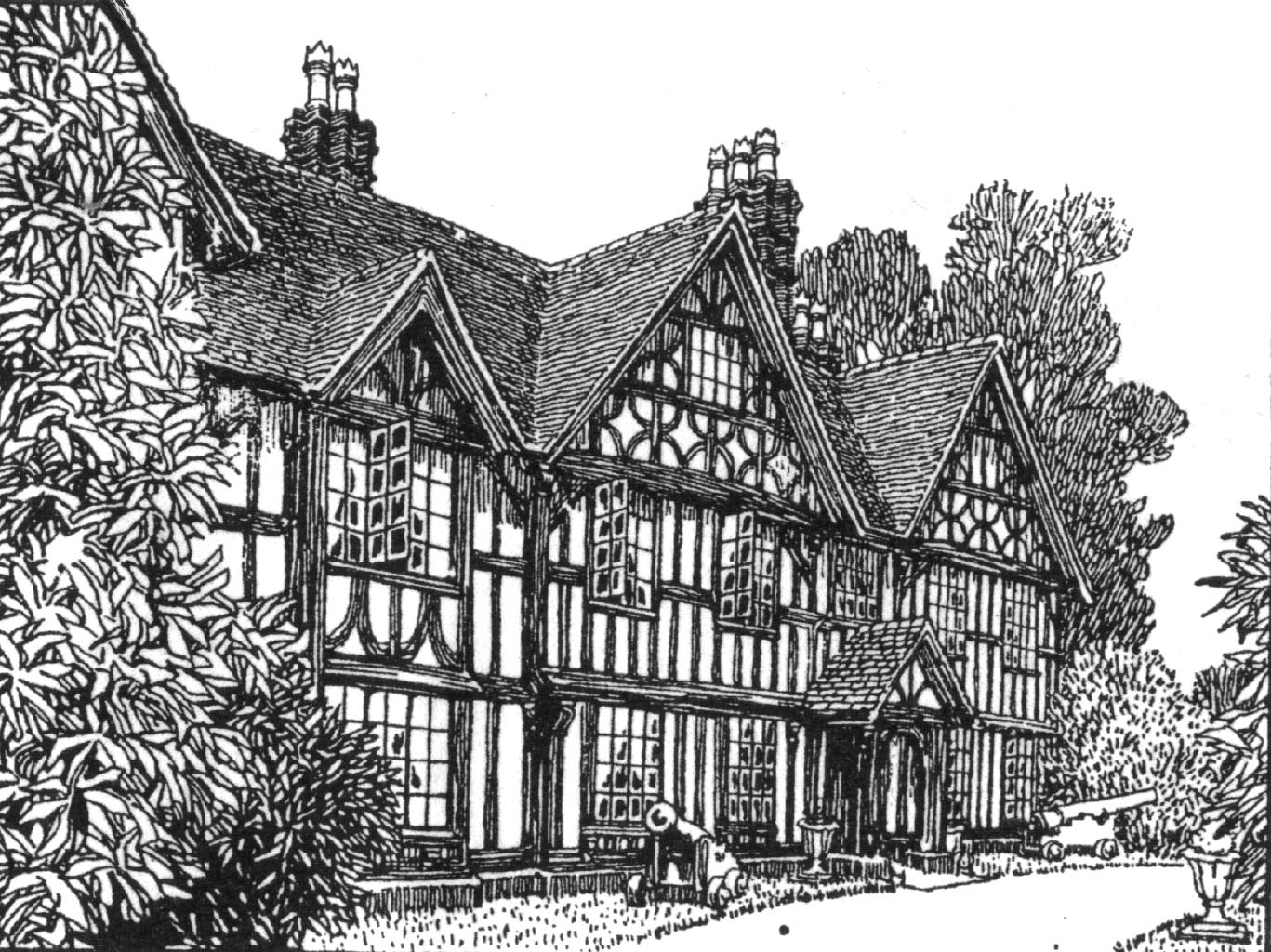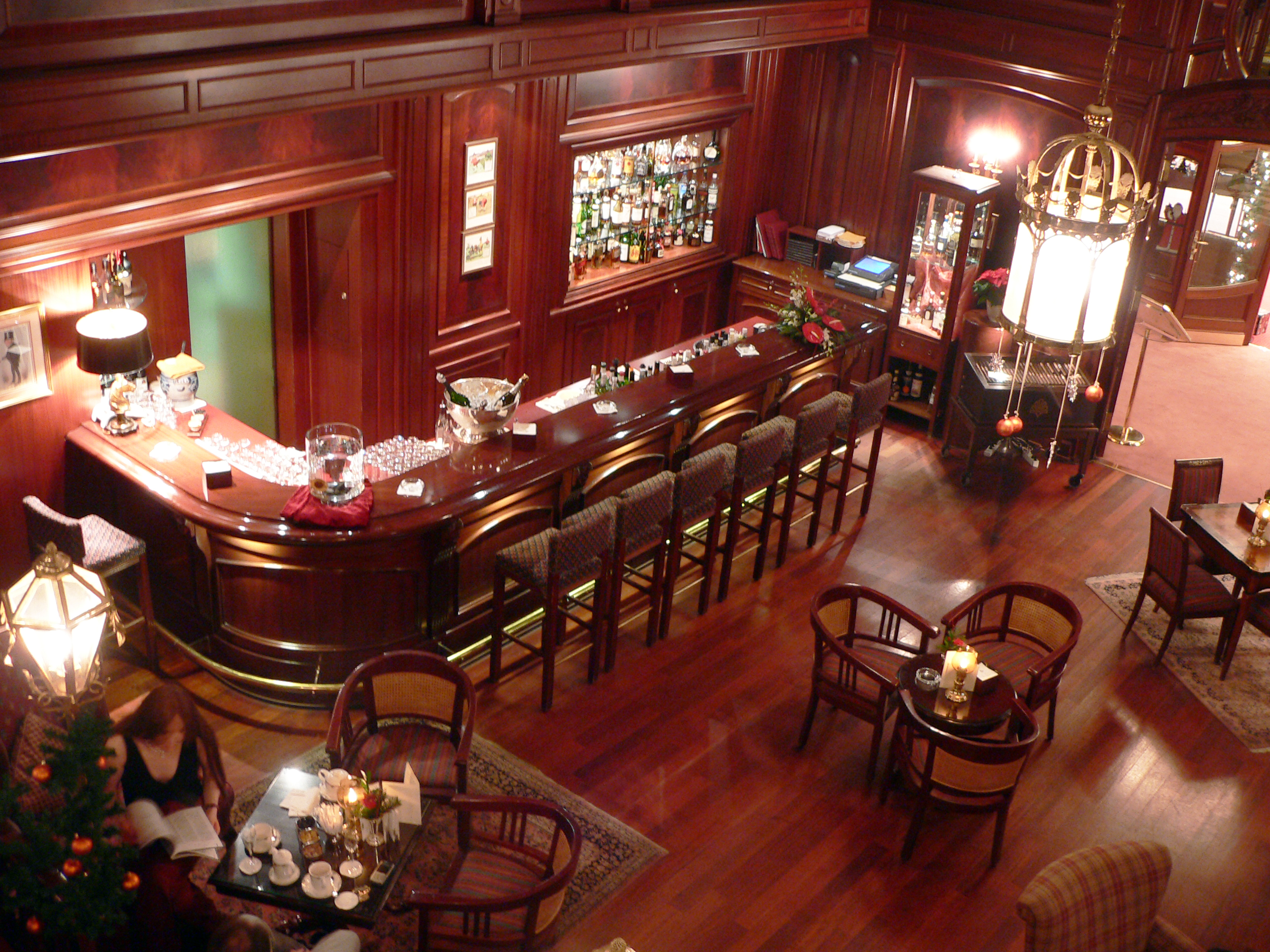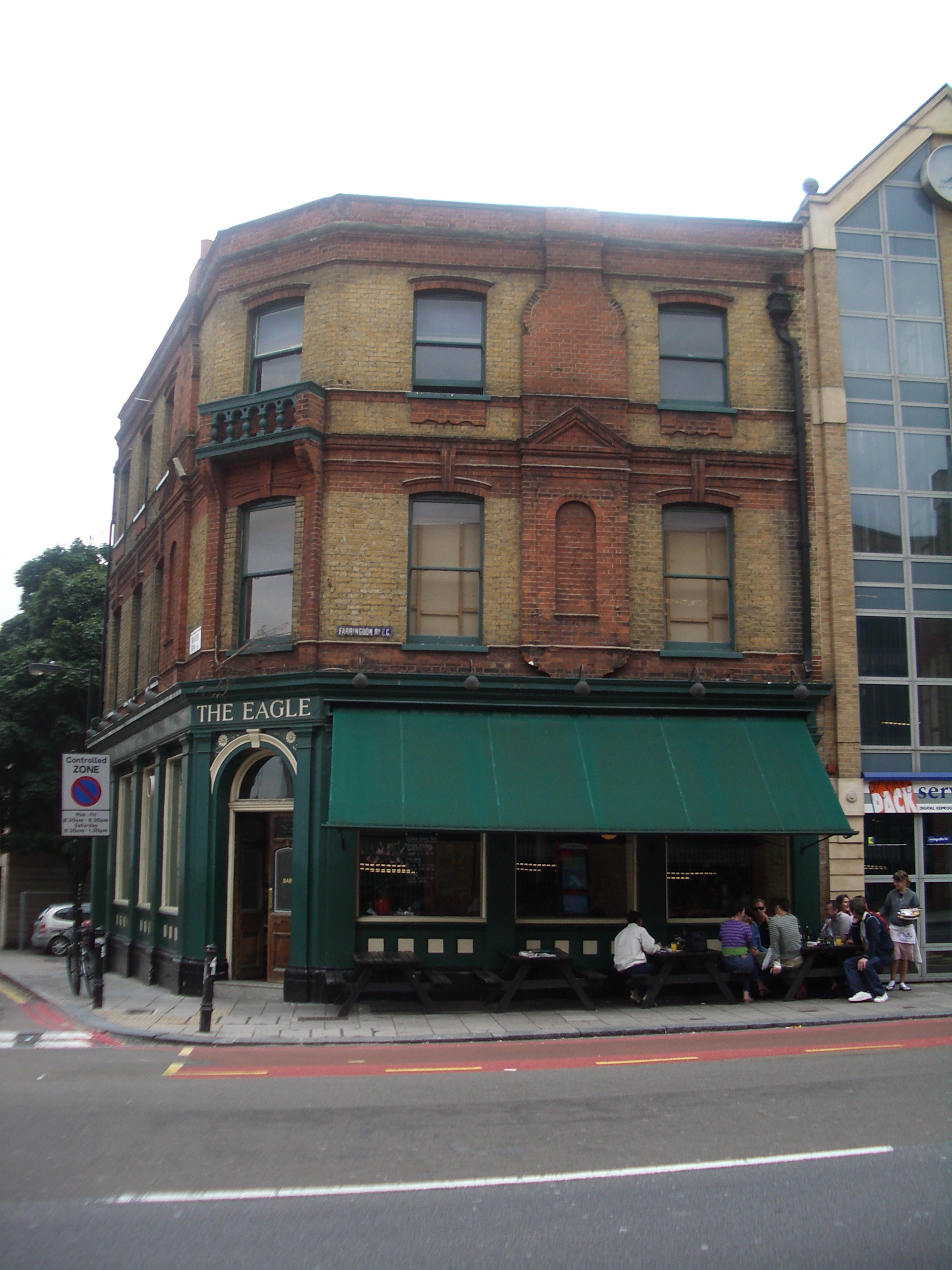|
Barnt Green House
Barnt Green House is a building at Barnt Green, Worcestershire, England. It is a Grade II listed building. It was once a residence of the local nobles, the Earls of Plymouth. Queen Victoria is reputed to have spent the night there. The house was bought by Other Windsor, 6th Earl of Plymouth in 1811, from the previous occupants, the Yates family. Records state that the house was built in 1651, however it appears to have been extensively refurbished in the early 19th century, in a Tudorbethan style. The building has lost almost all of its grounds and is now a wine bar and gastropub, known as the Barnt Green Inn. See also * History of Worcestershire The area now known as Worcestershire has had human presence for over half a million years. Interrupted by two ice ages, Worcestershire has had continuous settlement since roughly 10,000 years ago. In the Iron Age, the area was dominated by a seri ... References Grade II listed buildings in Worcestershire Country houses in Worc ... [...More Info...] [...Related Items...] OR: [Wikipedia] [Google] [Baidu] |
Barnt Green
Barnt Green is a village and civil parish in the Bromsgrove District of Worcestershire, England, situated south of Birmingham city centre, with a population at the 2011 census of 1,794. History Originating from the development of the railway, Barnt Green has always been a commuter settlement. When the Birmingham and Gloucester Railway was completed in 1840 the only buildings already in existence on an 1880 map were Barnt Green House, probably the oldest recorded bearer of the name Barnt Green, the buildings which made up the railway station, and Sandhills Farm which dates from the 15th century. The early establishment of Barnt Green as a village began with the construction of ''The Victoria'' a public house that was originally built as a temperance house at the start of the 20th century. A later map from 1905 already shows several buildings, including the ''Victoria'' and many of the terraced houses which skirt today's shops. Development The majority of the village is a p ... [...More Info...] [...Related Items...] OR: [Wikipedia] [Google] [Baidu] |
Worcestershire
Worcestershire ( , ; written abbreviation: Worcs) is a county in the West Midlands of England. The area that is now Worcestershire was absorbed into the unified Kingdom of England in 927, at which time it was constituted as a county (see History of Worcestershire). Over the centuries the county borders have been modified, but it was not until 1844 that substantial changes were made. Worcestershire was abolished as part of local government reforms in 1974, with its northern area becoming part of the West Midlands and the rest part of the county of Hereford and Worcester. In 1998 the county of Hereford and Worcester was abolished and Worcestershire was reconstituted, again without the West Midlands area. Location The county borders Herefordshire to the west, Shropshire to the north-west, Staffordshire only just to the north, West Midlands to the north and north-east, Warwickshire to the east and Gloucestershire to the south. The western border with Herefordshire includes a ... [...More Info...] [...Related Items...] OR: [Wikipedia] [Google] [Baidu] |
England
England is a country that is part of the United Kingdom. It shares land borders with Wales to its west and Scotland to its north. The Irish Sea lies northwest and the Celtic Sea to the southwest. It is separated from continental Europe by the North Sea to the east and the English Channel to the south. The country covers five-eighths of the island of Great Britain, which lies in the North Atlantic, and includes over 100 smaller islands, such as the Isles of Scilly and the Isle of Wight. The area now called England was first inhabited by modern humans during the Upper Paleolithic period, but takes its name from the Angles, a Germanic tribe deriving its name from the Anglia peninsula, who settled during the 5th and 6th centuries. England became a unified state in the 10th century and has had a significant cultural and legal impact on the wider world since the Age of Discovery, which began during the 15th century. The English language, the Anglican Church, and Engli ... [...More Info...] [...Related Items...] OR: [Wikipedia] [Google] [Baidu] |
Listed Building
In the United Kingdom, a listed building or listed structure is one that has been placed on one of the four statutory lists maintained by Historic England in England, Historic Environment Scotland in Scotland, in Wales, and the Northern Ireland Environment Agency in Northern Ireland. The term has also been used in the Republic of Ireland, where buildings are protected under the Planning and Development Act 2000. The statutory term in Ireland is " protected structure". A listed building may not be demolished, extended, or altered without special permission from the local planning authority, which typically consults the relevant central government agency, particularly for significant alterations to the more notable listed buildings. In England and Wales, a national amenity society must be notified of any work to a listed building which involves any element of demolition. Exemption from secular listed building control is provided for some buildings in current use for worship, ... [...More Info...] [...Related Items...] OR: [Wikipedia] [Google] [Baidu] |
Earl Of Plymouth
Earl of Plymouth is a title that has been created three times: twice in the Peerage of England and once in the Peerage of the United Kingdom. History The first creation was in 1675 for Charles FitzCharles, one of the dozens of illegitimate children of King Charles II and one of a few by his mistress Catherine Pegge. He died without heirs in 1680, and the title became extinct. The second creation came in 1682 in favour of Thomas Hickman-Windsor, 7th Baron Windsor. The family descends from Sir Andrew Windsor, who fought at the Battle of the Spurs in 1513, where he was knighted. In 1529 he was summoned to Parliament as Baron Windsor, ''of Stanwell in the County of Buckingham''. His grandson, Edward, the third Baron, fought at the Battle of St Quentin in 1557. Edward's elder son Frederick, the fourth Baron, died unmarried at an early age and was succeeded by his younger brother, Henry. The latter's son, Thomas, the sixth Baron, was a Rear-Admiral in the Royal Navy. On Thoma ... [...More Info...] [...Related Items...] OR: [Wikipedia] [Google] [Baidu] |
Queen Victoria
Victoria (Alexandrina Victoria; 24 May 1819 – 22 January 1901) was Queen of the United Kingdom of Great Britain and Ireland from 20 June 1837 until Death and state funeral of Queen Victoria, her death in 1901. Her reign of 63 years and 216 days was longer than that of List of monarchs in Britain by length of reign, any previous British monarch and is known as the Victorian era. It was a period of industrial, political, scientific, and military change within the United Kingdom, and was marked by a great expansion of the British Empire. In 1876, the British Parliament voted to grant her the additional title of Empress of India. Victoria was the daughter of Prince Edward, Duke of Kent and Strathearn (the fourth son of King George III), and Princess Victoria of Saxe-Coburg-Saalfeld. After the deaths of her father and grandfather in 1820, she was Kensington System, raised under close supervision by her mother and her comptroller, John Conroy. She inherited the throne aged 18 af ... [...More Info...] [...Related Items...] OR: [Wikipedia] [Google] [Baidu] |
Other Windsor, 6th Earl Of Plymouth
Other Archer Windsor, 6th Earl of Plymouth (2 July 1789 – 20 July 1833) was an English nobleman, the eldest and only surviving son of the 5th Earl of Plymouth by his wife and cousin, Hon. Sarah Archer, daughter and eventual co-heiress of the 2nd Baron Archer. He was the sixth Earl of Plymouth of the 1682 creation. Family He was born the only son, and had two sisters Lady Mary Windsor, who married the Marquess of Downshire and Lady Harriet Windsor, who married the Hon. Robert Clive, a son of the Earl of Powis and grandson of Clive of India. Styled Lord Windsor from birth, he inherited his titles from his father on 12 June 1799 at the age of ten, along with his father's land at Tardebigge, the country seat Hewell Grange, and land in Shropshire and Glamorgan. A year later (1800), his mother married Lord Amherst as his first wife, and bore him two sons. It is not clear if young Plymouth grew up with his stepfather (but highly likely); if so, he was exposed to the influences ... [...More Info...] [...Related Items...] OR: [Wikipedia] [Google] [Baidu] |
Tudorbethan
Tudor Revival architecture (also known as mock Tudor in the UK) first manifested itself in domestic architecture in the United Kingdom in the latter half of the 19th century. Based on revival of aspects that were perceived as Tudor architecture, in reality it usually took the style of English vernacular architecture of the Middle Ages that had survived into the Tudor period. The style later became an influence elsewhere, especially the British colonies. For example, in New Zealand, the architect Francis Petre adapted the style for the local climate. In Singapore, then a British colony, architects such as R. A. J. Bidwell pioneered what became known as the Black and White House. The earliest examples of the style originate with the works of such eminent architects as Norman Shaw and George Devey, in what at the time was considered Neo-Tudor design. Tudorbethan is a subset of Tudor Revival architecture that eliminated some of the more complex aspects of Jacobethan in favour of ... [...More Info...] [...Related Items...] OR: [Wikipedia] [Google] [Baidu] |
Bar (establishment)
A bar, also known as a saloon, a tavern or tippling house, or sometimes as a pub or club, is a retail business establishment that serves alcoholic beverages, such as beer, wine, liquor, cocktails, and other beverages such as mineral water and soft drinks. Bars often also sell snack foods, such as crisps or peanuts, for consumption on their premises. Some types of bars, such as pubs, may also serve food from a restaurant menu. The term "bar" refers to the countertop where drinks are prepared and served, and by extension to the overall premises. The term derives from the metal or wooden bar (barrier) that is often located along the length of the "bar". Over many years, heights of bars were lowered, and high stools added, and the brass bar remains today. Bars provide stools or chairs that are placed at tables or counters for their patrons. Bars that offer entertainment or live music are often referred to as "music bars", "live venues", or "nightclubs". Types of bars ra ... [...More Info...] [...Related Items...] OR: [Wikipedia] [Google] [Baidu] |
Gastropub
A gastropub or gastro pub is a pub that serves gourmet comfort food. The term was coined in the 1990s, though similar brewpubs existed during the 1980s. Etymology The term ''gastropub'' (derived from gastronomy) was coined in 1991, when David Eyre and Mike Belben took over The Eagle pub in Clerkenwell, London. Traditionally, British pubs were drinking establishments and little emphasis was placed on the serving of food. If pubs served meals they were usually basic cold dishes such as a ploughman's lunch. The concept of gastropubs largely redefined both pub culture and British dining, and has occasionally attracted criticism for potentially removing the character of traditional pubs. "Pub grub" expanded to include British food items such as steak and ale pie, shepherd's pie, fish and chips, bangers and mash, Sunday roast, ploughman's lunch, and pasties. In addition, dishes such as hamburgers, chips, lasagne and chili con carne are now often served. In August 2012, ''gastropub' ... [...More Info...] [...Related Items...] OR: [Wikipedia] [Google] [Baidu] |
History Of Worcestershire
The area now known as Worcestershire has had human presence for over half a million years. Interrupted by two ice ages, Worcestershire has had continuous settlement since roughly 10,000 years ago. In the Iron Age, the area was dominated by a series of hill forts, and the beginnings of industrial activity including pottery and salt mining can be found. It seems to have been relatively unimportant during the Roman era, with the exception of the salt workings. During the Anglo-Saxon era, Worcestershire was an important base of Church power and learning. The county as a named political entity dates to this time, being formed in 918. From the Middle Ages, the role of the city of Worcester becomes particularly important in the county. The city's merchants, Church, aristocracy and gentry become the main power brokers, and tensions between them can be seen. The county had an important role in the English Civil War, being part of the Royalists' front line, and already important for metal ... [...More Info...] [...Related Items...] OR: [Wikipedia] [Google] [Baidu] |
Grade II Listed Buildings In Worcestershire
Grade most commonly refers to: * Grade (education), a measurement of a student's performance * Grade, the number of the year a student has reached in a given educational stage * Grade (slope), the steepness of a slope Grade or grading may also refer to: Music * Grade (music), a formally assessed level of profiency in a musical instrument * Grade (band), punk rock band * Grades (producer), British electronic dance music producer and DJ Science and technology Biology and medicine * Grading (tumors), a measure of the aggressiveness of a tumor in medicine * The Grading of Recommendations Assessment, Development and Evaluation (GRADE) approach * Evolutionary grade, a paraphyletic group of organisms Geology * Graded bedding, a description of the variation in grain size through a bed in a sedimentary rock * Metamorphic grade, an indicatation of the degree of metamorphism of rocks * Ore grade, a measure that describes the concentration of a valuable natural material in the surround ... [...More Info...] [...Related Items...] OR: [Wikipedia] [Google] [Baidu] |








